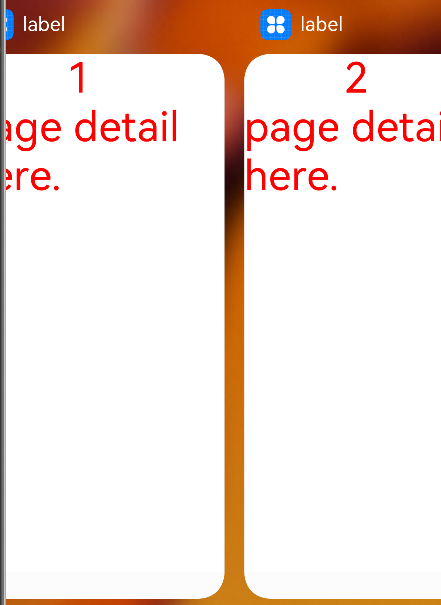ArkTS #02# Ability的调用及启动模式
1调用&单实例
import common from '@ohos.app.ability.common'
import Want from '@ohos.app.ability.Want'
@Entry
@Component
struct Index {
@State message: string = 'Hello World'
build() {
Row() {
Column() {
Text(this.message)
.fontSize(50)
.fontWeight(FontWeight.Bold)
Button('jump ab2 ').fontSize(55).onClick(() => {
// 1 获取上下文
let context = getContext(this) as common.UIAbilityContext
// 2 封装want
let want: Want = {
deviceId: "",
bundleName: "com.example.myapplication",
moduleName: "entry",
abilityName: "EntryAbility1",
}
// 3 调用上下文的start ab 启动 目标ab
context.startAbility(want)
})
}
.width('100%')
}
.height('100%')
}
}单实例是Ability的默认启动模式,因此,无需在module.json5中配置EntryAbility1
2多实例

{
"name": "EntryAbility1",
"srcEntry": "./ets/entryability1/EntryAbility1.ts",
"description": "$string:EntryAbility1_desc",
"icon": "$media:icon",
"label": "$string:EntryAbility1_label",
"startWindowIcon": "$media:icon",
"startWindowBackground": "$color:start_window_background",
"launchType": "standard",
// 多实例启动方法 , 可以 独立多开
}3指定实例

从index跳转,在Want中附带个体信息:
import common from '@ohos.app.ability.common'
import Want from '@ohos.app.ability.Want'
@Entry
@Component
struct Index {
@State numbers: number[] = []
index: number = 0
build() {
Row() {
Column() {
Row() {
if (this.numbers.length <= 0) {
Text('please add numbers !!!!!').fontSize(55)
} else {
ForEach(this.numbers, x => {
Text(x.toString())
.fontSize(55)
.border({width: 1})
.onClick(() => {
let context = getContext(this) as common.UIAbilityContext
let want: Want = {
deviceId: "",
bundleName: "com.example.myapplication",
moduleName: "entry",
abilityName: "EntryAbility1",
parameters: {
myKey: x.toString(),
},
}
context.startAbility(want)
})
})
}
}
Button('add').fontSize(55).onClick(() => {
this.index++
this.numbers.push(this.index)
})
}
.width('100%')
}
.height('100%')
}
}未知步骤:
import AbilityStage from '@ohos.app.ability.AbilityStage';
import Want from '@ohos.app.ability.Want';
export default class MyStage extends AbilityStage {
onAcceptWant(want: Want) {
if (want.abilityName === 'EntryAbility1') {
return "" + want.parameters.myKey
}
return ""
}
}改module.json5:
{
"module": {
"name": "entry",
"type": "entry",
"description": "$string:module_desc",
"mainElement": "EntryAbility",
"srcEntry": "./ets/MyStage.ets",
"deviceTypes": [
"phone",
"tablet"
],改:
export default class EntryAbility1 extends UIAbility {
onCreate(want, launchParam) {
hilog.info(0x0000, 'testTag', '%{public}s', 'Ability onCreate');
let myKey = want.parameters.myKey
AppStorage.SetOrCreate("_myKey", myKey)
}接参数:
@Entry
@Component
struct PageDetail {
myKey: string = AppStorage.Get("_myKey")
build() {
Column() {
Text(this.myKey).fontSize(66).fontColor(Color.Red)
Text("page detail here. ").fontSize(66).fontColor(Color.Red)
}
}
}

 浙公网安备 33010602011771号
浙公网安备 33010602011771号